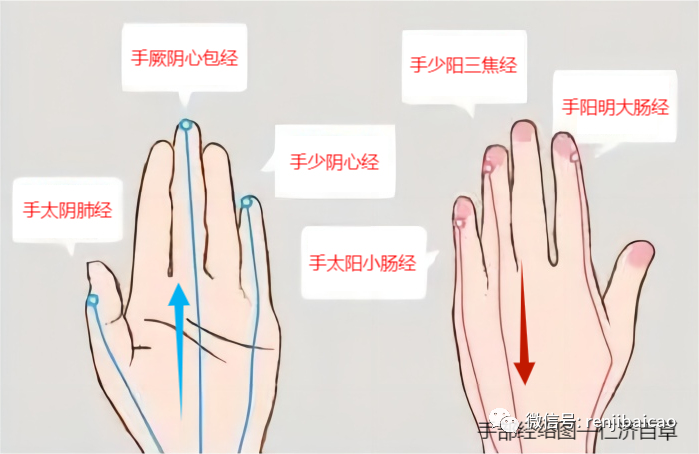Observation (望), Listening (闻), Inquiry (问), and Palpation (切) are the fundamental methods of diagnosing diseases in Traditional Chinese Medicine (TCM). Although the ancients described the level of these four diagnostic methods as ‘divine craftsmanship,’ in real clinical practice, only those who flexibly apply all four methods can truly understand the underlying issues and treat according to the symptoms.Palpation, known as ‘切,’ actually consists of two parts: pulse diagnosis and palpation. In clinical practice, both pulse diagnosis and palpation have significant guiding meanings and should not be biased towards one over the other; they must be used together to diagnose the illness.Director Zhang Daning applies this ‘palpation method’ with great finesse.
Familiar Diagnosis
Is like a wonderful performance
Focusing on Director Zhang’s diagnostic details, the observation begins the moment the patient enters the room (observing spirit, face, and form). Once seated, Director Zhang usually gently holds the patient’s ten fingers, then uses his thumbs to feel the temperature at their fingertips. Following this, he takes the pulse with both hands while simultaneously observing the color and texture of the patient’s palm, wrist, and even forearm. Finally, during the inquiry and listening process, he observes the face and tongue, thus forming a clear understanding in his mind.All these steps occur simultaneously in an instant, allowing the physician to grasp the patient’s condition completely.Students often marvel at Director Zhang’s precise and effective prescriptions, unaware that the skill behind each formula and dosage is encapsulated in these brief minutes of diagnosis—no wonder the ‘National Medical Saint’ Mr. Pu Fuzhou said that the prescription and medication are recorded in books, but he primarily teaches students to differentiate and diagnose patterns.Regarding palpation, Director Zhang summarizes:“By touching their fingertips, the patients can also feel my warmth; this is not only a step in diagnosis but also allows the patients to sense the physician’s warmth!”
Cold Hands During Palpation
Director Zhang explains the significance of this
When palpating, if the patient’s fingertips feel icy, how should one interpret this? Most would consider it a deficiency of Yang Qi (阳虚) or an invasion of cold (寒凝), typically using warming Yang or dispersing cold methods. However, sometimes the results are not satisfactory.To explore the reasons, Director Zhang explains:The twelve meridians of the human body are distributed throughout the body, among which the three Yin meridians that circulate in the hand are the Taiyin Lung Meridian (手太阴肺经), Jueyin Pericardium Meridian (手厥阴心包经), and Shaoyin Heart Meridian (手少阴心经), all originating from the chest and ending at the fingertips; the three Yang meridians that circulate in the hand are the Yangming Large Intestine Meridian (手阳明大肠经), Shaoyang Sanjiao Meridian (手少阳三焦经), and Taiyang Small Intestine Meridian (手太阳小肠经), all starting from the fingertips and ending at the head and face.

In terms of Yin and Yang, the Taiyin and Yangming meridians are interrelated, as are the Jueyin and Shaoyang, and the Shaoyin and Taiyang. This means that the interrelated Yin and Yang meridians intersect at the tips of the hands and feet.When the circulation of the Yin and Yang meridians is normal, the temperature at the fingertips is also normal; when the circulation is obstructed, the temperature at the fingertips will decrease, which is what Zhang Zhongjing referred to as ‘retraction’ in the Treatise on Cold Damage (《伤寒论》).“Any retraction occurs when the Yin and Yang Qi do not connect smoothly, leading to retraction. Retraction is when the hands and feet are cold.”
Winter Solstice
How to respond to the obstruction of Yin and Yang
1. Go to bed early and rise late, conserve essence and store Yang
If conditions allow, after the winter solstice, one can go to bed early (recommended to sleep by 10 PM) and rise late (7-8 AM). Going to bed early conserves essence, and rising late nurtures Yang, allowing Yin and Yang to harmonize and the meridians to flow smoothly. If early bedtimes and late rising are not feasible, a short nap around noon can help conserve spirit and nurture Yang.
2. Keep warm to dispel cold, do not disturb Yang
The so-called ‘wintering like a cat’ means that in winter, one should be still rather than active, warm rather than cold. Exposing the body or engaging in overly vigorous exercise is not suitable for this season. Indoor activities or gentle exercises like yoga and Ba Duan Jin (八段锦) can help to smooth the meridians and harmonize Yin and Yang.
3. Gradually supplement in winter, stay healthy like a tiger
The ancients advocated for supplementation in winter, primarily with meats, warming spices, dried fruits, legumes, and medicinal food formulas to replenish the body’s deficiencies during winter. However, with modern heating and air conditioning indoors, and good warming methods when going out, coupled with the generally low activity and consumption of urban populations, it is advisable to supplement moderately, and do not forget to nourish Yin and moisten dryness.Director Zhang Daning recommends braised radish and stir-fried carrot strips, both excellent and delicious dishes for this season.
4. Calm the spirit and stabilize the will, regulate emotions
In addition to insufficient Yang Qi and invasion of cold, emotional imbalance can also lead to obstruction of Yin and Yang. The Huangdi Neijing (《黄帝内经》) advises that in winter, one should ‘keep the will subdued and hidden,’ like a dormant dragon, act low-key, accumulate strength, and wait for spring to flourish.

Further Reading
The Application of Pulse Diagnosis in Cancer Treatment
Is Video Consultation Reliable? First, Understand TCM Observation Diagnosis!

